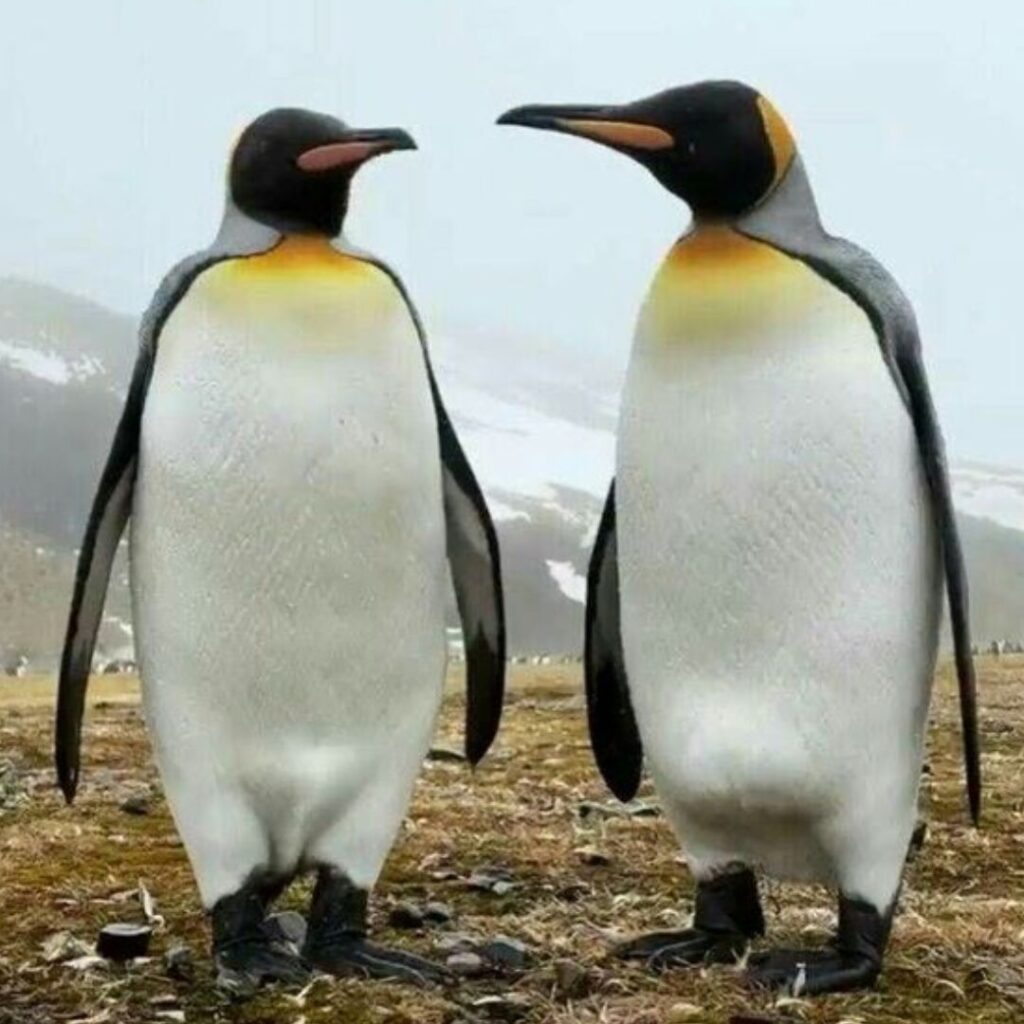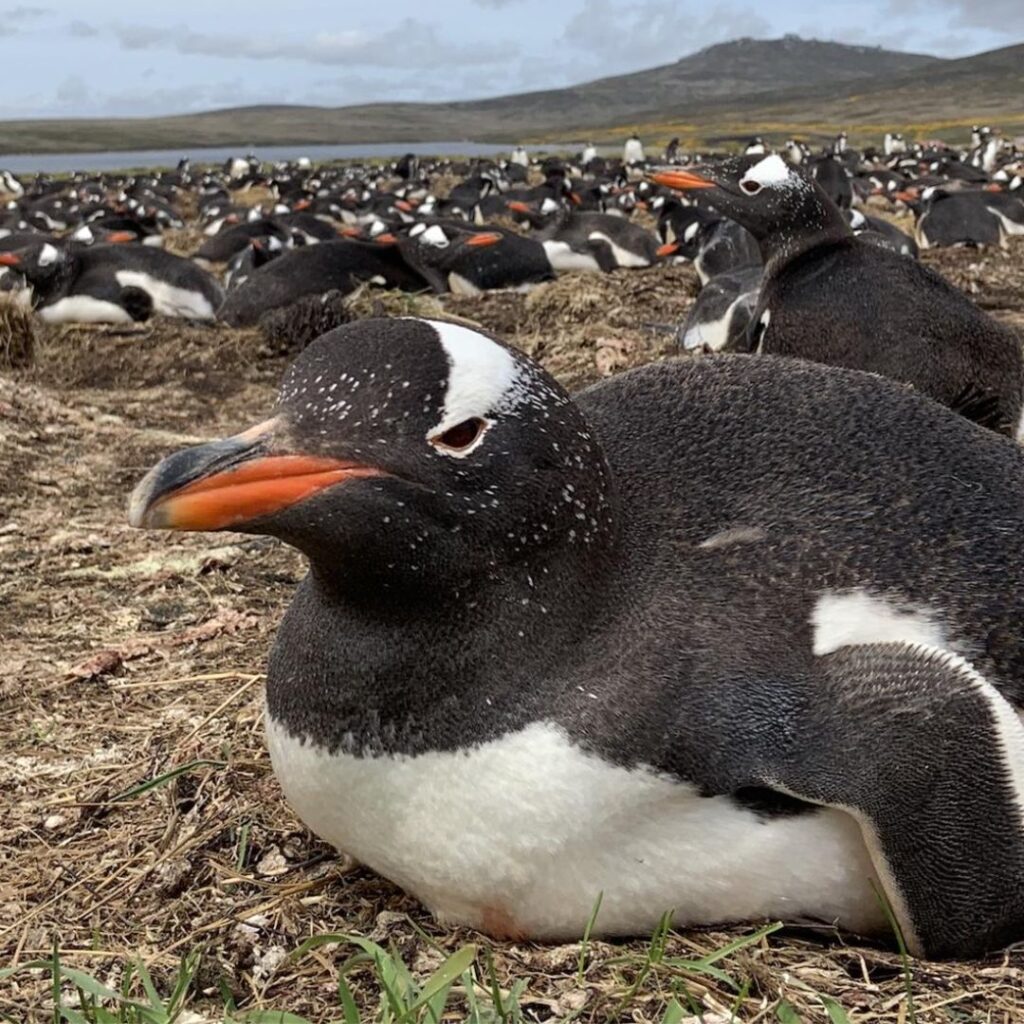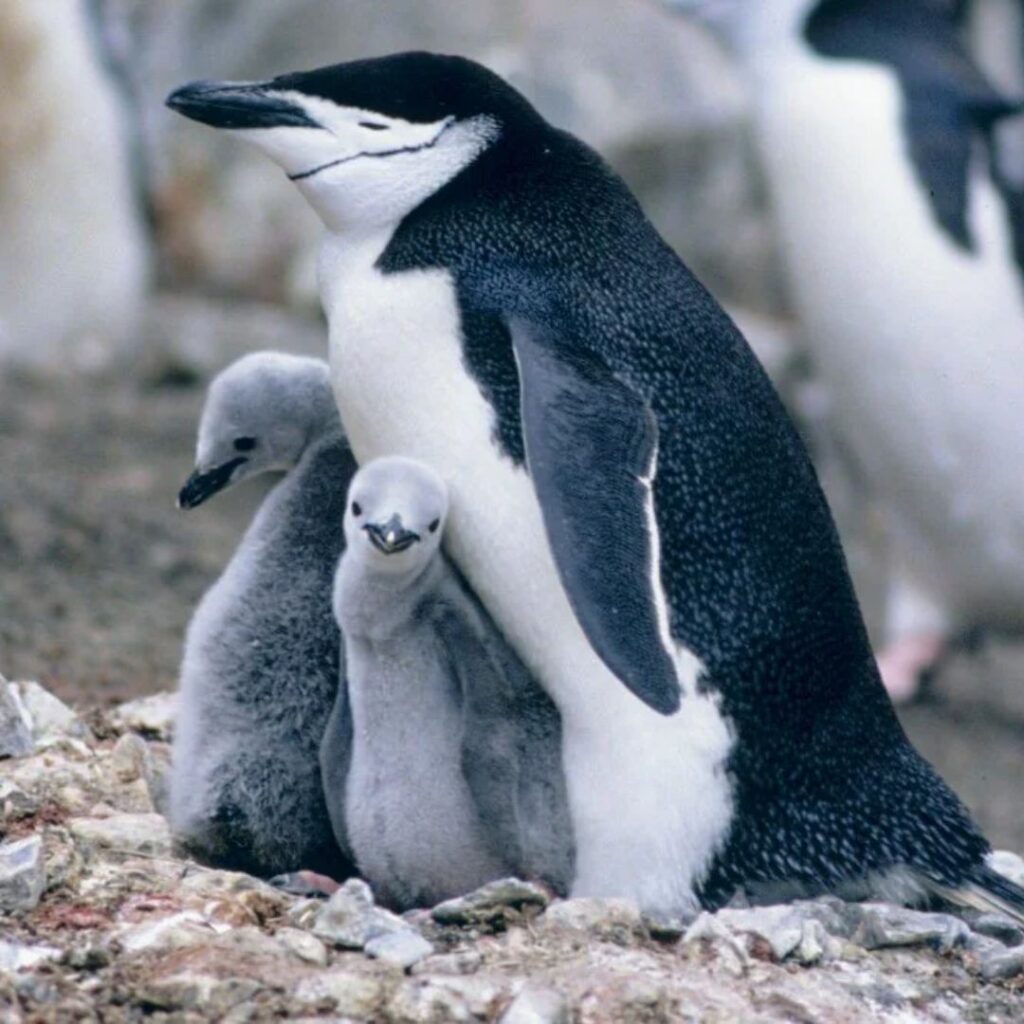
Penguins often conjure images of icy Antarctic landscapes, but these charismatic birds also call parts of South America home. Surprisingly, several penguin species thrive along the continent’s southern coasts, adapting to diverse habitats ranging from rocky shores to lush islands. South America hosts four main penguin species:
1. Magellanic Penguins
Magellanic penguins dominate the penguin population in South America. These medium-sized birds breed along the coasts of Chile, Argentina, and the Falkland Islands (Islas Malvinas). They build nests in burrows or under bushes, often forming large colonies.

Magellanic penguins get their name from the Strait of Magellan, where Ferdinand Magellan first observed them in 1520. Their distinctive white bands around their eyes and across their chests make them easily recognizable.
Also Read: African Penguins – Everything You Need to Know
2. Humboldt Penguins
Humboldt penguins inhabit the Pacific coast of South America, primarily in Peru and Chile. They thrive in the cold waters of the Humboldt Current, which gives them their name. These penguins face challenges due to overfishing and climate change, which affect their food supply.
Humboldt penguins have adapted to warmer climates compared to their Antarctic cousins. They have bare patches of skin around their eyes and bills to help them stay cool in the heat.

3. Galapagos Penguins
The Galapagos penguin holds the title of the northernmost penguin species and the only one found north of the equator. These small penguins live exclusively in the Galapagos Islands, off the coast of Ecuador.
As the rarest penguin species, Galapagos penguins face significant threats from climate change and introduced predators. Conservation efforts focus on protecting their unique island habitat.

4. Gentoo Penguins
Gentoo penguins inhabit the southern tip of South America, including parts of Chile, Argentina, and the Falkland Islands (Islas Malvinas). They also live on sub-Antarctic islands and the Antarctic Peninsula.
Known for their bright orange-red bills and white patches behind their eyes, Gentoo penguins are excellent swimmers. They can dive deeper and stay underwater longer than many other penguin species.

Habitat and Adaptation
South American penguins have adapted to a variety of coastal environments. They nest on rocky shores, sandy beaches, and even in coastal forests. Unlike their Antarctic relatives, these penguins cope with warmer temperatures and different prey species.
The cold Humboldt and Falkland Currents play crucial roles in supporting penguin populations along the South American coast. These currents bring nutrient-rich waters that attract the fish and squid that penguins rely on for food.

Conservation Challenges
South American penguins face several threats:
1. Overfishing depletes their food sources.
2. Oil spills and pollution harm their habitats.
3. Climate change alters ocean temperatures and currents, affecting their prey.
4. Introduced predators on breeding islands endanger eggs and chicks.

Conservation efforts focus on protecting breeding sites, regulating fishing practices, and mitigating the impacts of climate change. Several organizations work to rescue and rehabilitate injured or oiled penguins.
Penguin Tourism
The presence of penguins in South America attracts many tourists. Popular viewing sites include:
1. Punta Tombo in Argentina, home to a large Magellanic penguin colony.
2. Isla Magdalena in Chile, where visitors can walk among nesting Magellanic penguins.
3. The Galapagos Islands, offering a chance to see the rare Galapagos penguin.
4. Tierra del Fuego, where lucky visitors might spot Gentoo penguins.

Responsible tourism plays a vital role in penguin conservation by raising awareness and providing economic incentives for protection.
Also Read: How Many African Penguins Are Left In 2024?
Conclusion
South America indeed hosts several penguin species, each adapted to the continent’s diverse coastal environments. From the Galapagos Islands to the southern tip of Chile, these resilient birds have found their niche outside the Antarctic.
As we continue to learn about and appreciate South America’s penguins, it becomes clear that protecting these unique birds requires global effort. By supporting conservation initiatives and practicing responsible tourism, we can help ensure that future generations will still have the chance to marvel at penguins waddling along South American shores.
Pingback: 11 Fun Facts About Galapagos Penguins
Pingback: Why Is the Galapagos Penguin Endangered?